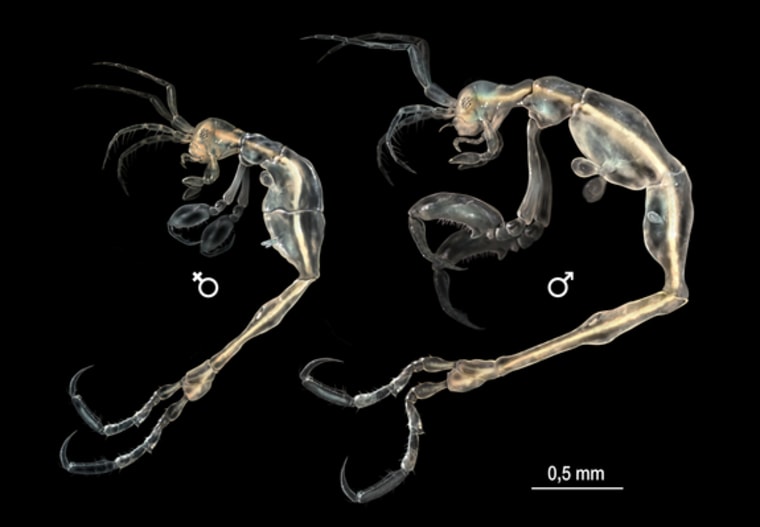A translucent underwater cave dweller that looks like a skeleton and travels like an inchworm is the newest member of California's array of marine life.
Scientists found a new species of skeleton shrimp — a group of tiny crustaceans that are actually caprellid amphipods, not shrimp — in vials collected from a small cave offshore of Southern California's Catalina Island. The two vials, one containing a male and one containing a female, were housed in the Canadian Museum of Nature in Ottawa.
Lead study author José Manuel Guerra-García, a caprellid expert at the University of Seville in Spain, realized the "shrimp" were a never-before-recognized species during a 2010 visit to the museum. Guerra-García compared the ghostlike creatures with other species of the genus, Liropus, and confirmed other scientists had never described the tiny crustaceans.
A report on the new species, named Liropus minusculus, was published Oct. 8 in the journal Zootaxa.
The name highlights the shrimp's minuscule size, with adult males measuring only 3.3 millimeters (0.12 inches). They live in a cave about 30 feet (9 meters) below the ocean surface on Isthmus Reef, a popular diving spot offshore of Catalina Island.
This is the first time a Liropus crustacean has been found in the northeast Pacific Ocean, Guerra-García said in a statement. There are eight other Liropus species, and L. minusculus, as its name suggests, is the smallest.
Caprellids prefer to live in shallow tidal zones, clinging to rocks and plants and snatching small meals drifting by in the currents, such as algae and larvae. Their elongated bodies resemble walking stick insects.
The new species differs from its Eastern Hemisphere cousins mainly by the appearance of its abdominal limbs and torso, Guerra-García said.
Email Becky Oskin or follow her @beckyoskin. Follow us @OAPlanet, Facebook and Google+. Original article on LiveScience's OurAmazingPlanet.
- Gallery: Magnificent Mantis Shrimp
- 6 Strange Species Discovered in Museums
- Gallery: Creatures from the Census of Marine Life
